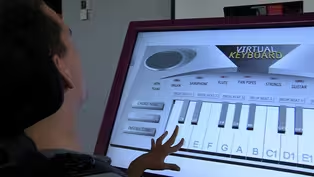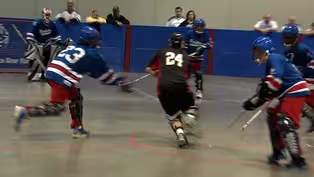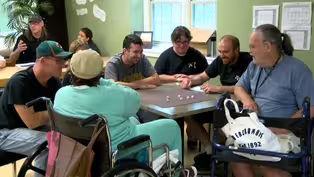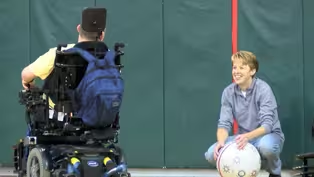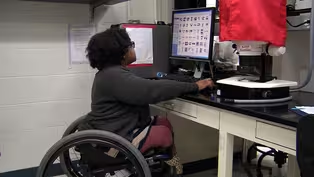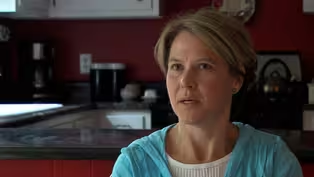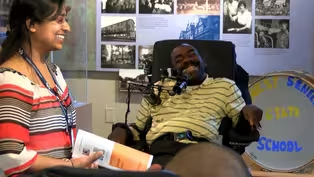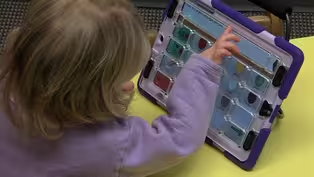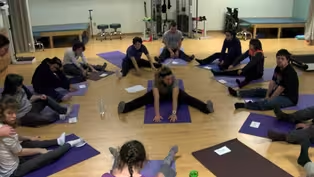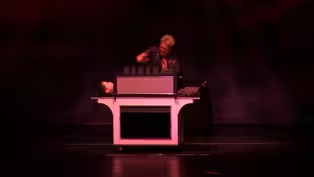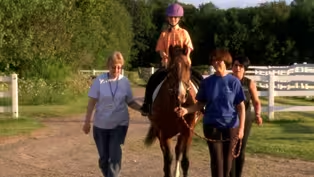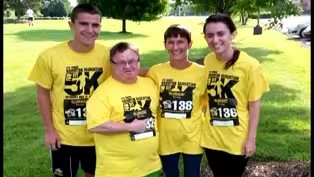Move To Include
Institutionalization
Special | 2m 28sVideo has Closed Captions
Many people with disabilities were sent to live in institutions away from their families.
People living with disabilities haven’t always been welcomed and included in our society. Many people with disabilities have been sent to live in institutions away from their families. We travel to the Museum of disAbility History in Buffalo, New York to meet Maria. Maria will tell us about her experiences living in and out of various institutions.
Problems playing video? | Closed Captioning Feedback
Problems playing video? | Closed Captioning Feedback
Move To Include is a local public television program presented by WXXI
Move To Include
Institutionalization
Special | 2m 28sVideo has Closed Captions
People living with disabilities haven’t always been welcomed and included in our society. Many people with disabilities have been sent to live in institutions away from their families. We travel to the Museum of disAbility History in Buffalo, New York to meet Maria. Maria will tell us about her experiences living in and out of various institutions.
Problems playing video? | Closed Captioning Feedback
How to Watch Move To Include
Move To Include is available to stream on pbs.org and the free PBS App, available on iPhone, Apple TV, Android TV, Android smartphones, Amazon Fire TV, Amazon Fire Tablet, Roku, Samsung Smart TV, and Vizio.
More from This Collection
Homework Hotline, designed for grades 4 through 12, provides the tools students need to succeed both in and out of the classroom, & supports academic achievement across a variety of learning standards. This collection is specifically curated by Move to Include & presents in-depth stories & profiles of individuals & organizations who are working to make our community inclusive & accessible for all.
Video has Closed Captions
How touch screen technology is making learning more accessible for all students. (2m 58s)
Video has Closed Captions
See how floor hockey is helping these players both in and out of the rink. (2m 16s)
Video has Closed Captions
A program that specializes in working with individuals suffering from traumatic brain injury. (4m 6s)
Video has Closed Captions
Recreational activities through adaptive sports and inclusive recreation. (5m 27s)
Video has Closed Captions
Genomics and how scientists use computers to analyze data. (2m 55s)
Video has Closed Captions
Kerrie Giesen tells us what it is like to have Multiple Sclerosis and how her life has changed. (3m 11s)
Video has Closed Captions
Charles uses eye gaze technology and a device called a Dynavox to help him communicate. (2m 21s)
Video has Closed Captions
How speech pathologists help children with communicative disorders. (2m 25s)
Video has Closed Captions
Using magic tricks to help therapists provide better care to people with disabilities. (4m 24s)
Video has Closed Captions
Equine assisted therapy. Learn about the benefits of working with horses. (2m 37s)
Video has Closed Captions
We ask Pat and his family how Down Syndrome has impacted their lives. (2m 40s)
Providing Support for PBS.org
Learn Moreabout PBS online sponsorshipHello, my name is Maria Bell and I work at the Disability History Museum of People and I also do parts for public and research on the computer, looking up artifacts to put it different in the library.
And I give tours for the new employees of people and when I was really, really young, I lived in three different institutions in New York City.
In these places, there was a large number of people and little to no personal belongings.
The care was mainly from the nurses aides and you were constantly being watched over and they only let you know what they felt you needed to know.
Early asylums were meant to be educational, but unfortunately, throughout time they would drift into what we'd call custodial or basically warehouses for people who are different and that drift from helping and educating to just stockpiling people away from their community, away from their family led to some severe problems for people with disability.
It led to some degree of a loss of personhood.
In 1992, it was moved to a group home with people agency.
I lived there for about 17 years with 14 other people.
We had staff come in and help us out when we needed it in a group home.
Like I said, you had staff carrying crew.
They didn't give you the opportunity back then to make your own decisions.
And now that I'm older, I make my own decisions.
There's nobody to tell me what to do, when to eat, when to go to bed, when to wake up, when to take a medicine.
There's nobody there to tell me that I do it myself.
I like living by myself.
I've done it for five years and it's the best thing I've ever done for me.
Support for PBS provided by:
Move To Include is a local public television program presented by WXXI
